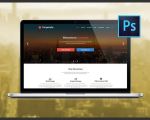- 1-Strategic Approach to Website Design for Revenue Growth
- 2-Key Elements That Drive Business Conversions
- 3-Optimizing User Experience to Boost Sales
- 4-The Role of Content and Visuals in Conversion
- 5-Case Studies Showcasing Successful Revenue-Boosting Websites
- 6-Why Choose SitePoint 24 for Your Web Design Needs
1. Strategic Approach to Website Design for Revenue Growth
Designing a website that effectively increases business revenue starts with a strategic mindset. It’s not just about aesthetics; it’s about aligning every design choice with clear business goals. To create a revenue-driving website, begin by identifying your target audience and understanding their behaviors, needs, and pain points. This insight guides the creation of a tailored user journey that encourages visitors to take action.
Establishing measurable goals, such as increasing product sales, generating leads, or boosting subscription rates, allows you to focus design elements on what truly impacts revenue. Strategy-driven design integrates conversion-focused layouts, calls to action, and intuitive navigation to guide visitors seamlessly towards purchasing or engaging with your brand.
1.1 The Importance of Goal-Oriented Design
Without clear goals, websites risk being visually impressive but ineffective at converting visitors. Goal-oriented design ensures each page serves a purpose—whether it’s educating customers, simplifying purchase paths, or building trust—ultimately turning browsers into buyers.
2. Key Elements That Drive Business Conversions
Several design components directly influence how well a website converts traffic into revenue. One critical element is a compelling value proposition presented prominently on the homepage, so visitors immediately understand what your business offers and why it matters.
Another vital element is trust signals such as testimonials, security badges, and clear contact information. These build credibility and reduce hesitation during purchasing decisions. Additionally, fast loading times and mobile responsiveness are essential, as slow or non-adaptive websites frustrate users and increase bounce rates.
2.1 Clear Calls to Action (CTAs)
CTAs must be visually distinct and persuasive, guiding users toward desired actions like “Buy Now,” “Request a Quote,” or “Subscribe.” Testing different CTA designs and placements can significantly improve conversion rates.
3. Optimizing User Experience to Boost Sales
User experience (UX) lies at the heart of website design that increases business revenue. A smooth, intuitive UX minimizes friction during browsing and checkout processes. Simplifying navigation with logical menus and search functionality helps visitors find products or information quickly.
Moreover, streamlining forms and reducing unnecessary steps during sign-ups or purchases lowers abandonment rates. Integrating live chat or chatbot support offers immediate assistance, increasing user satisfaction and trust.
3.1 Personalization and Retargeting Techniques
Advanced UX strategies include personalizing content based on user behavior and employing retargeting to remind visitors of products they showed interest in. These techniques nurture leads and encourage repeat visits that convert into sales.
4. The Role of Content and Visuals in Conversion
Compelling content combined with high-quality visuals drives engagement and persuades visitors to act. Clear, benefit-focused copy that addresses customer pain points helps users understand the value your business provides. Meanwhile, visuals such as product photos, videos, and infographics support storytelling and enhance emotional connection.
Regularly updating content keeps your website relevant and improves SEO, drawing more organic traffic that can be converted. Integrating customer reviews and case studies further reinforces trust and demonstrates real-world success.
4.1 Using Visual Hierarchy to Guide Attention
Designers use visual hierarchy—through size, color, and placement—to highlight key messages and CTAs. Effective hierarchy ensures that visitors naturally focus on elements that drive conversions, improving overall revenue generation.
5. Case Studies Showcasing Successful Revenue-Boosting Websites
Consider the example of a mid-sized e-commerce retailer that revamped their website focusing on simplifying checkout and highlighting customer testimonials. Within three months, their conversion rate increased by 30%, translating to a significant revenue boost.
Another story involves a service-based business that improved its lead generation by redesigning their contact forms and adding personalized chat support, resulting in a 25% increase in qualified leads. These cases illustrate that thoughtful design choices backed by data lead to tangible financial results.
5.1 Learning from Real-World Successes
Studying such examples provides valuable insights into what works and what doesn’t, helping businesses avoid common pitfalls and invest wisely in design improvements that truly impact revenue.
6. Why Choose SitePoint 24 for Your Web Design Needs
For businesses looking to design a website that increases business revenue, SitePoint 24 offers expert services tailored to your unique goals. From strategy consultation to full design and optimization, the platform connects you with professionals skilled in crafting conversion-focused websites.
SitePoint 24 also provides resources and tools to help you stay updated on best practices, ensuring your website continues to evolve alongside market trends and customer expectations. Choosing SitePoint 24 guarantees access to trusted expertise that turns your website into a powerful revenue-generating asset.
6.1 How SitePoint 24 Supports Your Growth
With personalized support and ongoing optimization services, SitePoint 24 helps you unlock your website’s full potential, boosting sales and enhancing customer engagement. This partnership ensures your online presence is a driver of sustained business success.








